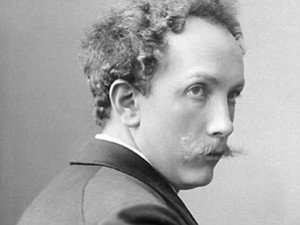 Facebook
Facebook
 X
X
 Instagram
Instagram
 TikTok
TikTok
 Youtube
Youtube

A famous conductor once said, “A great orchestra is like an English lawn. It must be clipped and watered twice a day — and for a hundred years.” The San Diego Symphony has been clipped and watered twice a day for about ten years. On Saturday night it was obvious that the orchestra is still being groomed.
The program for the concert was puzzling. Wagner’s Siegfried Idyll was followed by Schubert’s Symphony No. 8: Unfinished and then Richard Strauss’ Don Quixote.
This was the penultimate concert of the Jacob’s Masterworks Series so there could have been an element of fatigue. I felt as though the concert was lacking a piece of music that had enough juice to overcome the dog days of the symphony season.
The Siegfried Idyll is a piece of music that must reside in the bones of an orchestra in order to fulfill the domestic romance for which it was famously written. Wagner intended this piece of music to remain a private composition for his family. Financial strain forced him to publish it eight years after he had it performed in his home on Christmas morning 1870.
The performance by maestro Ling and the San Diego Symphony fell somewhere between perfunctory and satisfactory. The music felt as if it was unfamiliar and therefore the performance was lukewarm.
I was nonplused by the performance of Schubert’s most popular orchestral piece, the Unfinished. The tempo was slow but sluggish. A slow tempo is a good thing if it is true.
Leonard Bernstein and Sergiu Celibidache favored slow tempi in their golden years but those performances were seldom sluggish. Both conductors created concerts that were expansive and had an element of the mystical about them.
I’m unaware of maestro Ling’s intentions with Schubert but it felt as though he were trying something new. The new approach didn’t feel true. The orchestra sounded as if they were detached from the music and almost sarcastic in their phrasing.
Don Quixote is the least accessible in the pantheon of Strauss’ concert overtures. Guest cellist Johannes Moser and San Diego Symphony principal viola Chi-Yuan Chen held down the solo parts admirably, but this isn’t the best thing Strauss composed.
Don Quixote is full of gimmicks, such as a wind machine, and orchestral experimentation. It falls right after Also Sprach Zarathustra and before Ein Heldenleben in Strauss’ list of compositions. Those two are paradigms for the orchestral orgies with which Strauss was so enamored as a young composer.
Don Quixote comes off as piece of music that Strauss was trying to force, whereas the other two are more authentic to his compositional vision.
An anomaly is the best way to describe the evening. In a season overflowing with sublime performances, this one stood out as pedestrian.


A famous conductor once said, “A great orchestra is like an English lawn. It must be clipped and watered twice a day — and for a hundred years.” The San Diego Symphony has been clipped and watered twice a day for about ten years. On Saturday night it was obvious that the orchestra is still being groomed.
The program for the concert was puzzling. Wagner’s Siegfried Idyll was followed by Schubert’s Symphony No. 8: Unfinished and then Richard Strauss’ Don Quixote.
This was the penultimate concert of the Jacob’s Masterworks Series so there could have been an element of fatigue. I felt as though the concert was lacking a piece of music that had enough juice to overcome the dog days of the symphony season.
The Siegfried Idyll is a piece of music that must reside in the bones of an orchestra in order to fulfill the domestic romance for which it was famously written. Wagner intended this piece of music to remain a private composition for his family. Financial strain forced him to publish it eight years after he had it performed in his home on Christmas morning 1870.
The performance by maestro Ling and the San Diego Symphony fell somewhere between perfunctory and satisfactory. The music felt as if it was unfamiliar and therefore the performance was lukewarm.
I was nonplused by the performance of Schubert’s most popular orchestral piece, the Unfinished. The tempo was slow but sluggish. A slow tempo is a good thing if it is true.
Leonard Bernstein and Sergiu Celibidache favored slow tempi in their golden years but those performances were seldom sluggish. Both conductors created concerts that were expansive and had an element of the mystical about them.
I’m unaware of maestro Ling’s intentions with Schubert but it felt as though he were trying something new. The new approach didn’t feel true. The orchestra sounded as if they were detached from the music and almost sarcastic in their phrasing.
Don Quixote is the least accessible in the pantheon of Strauss’ concert overtures. Guest cellist Johannes Moser and San Diego Symphony principal viola Chi-Yuan Chen held down the solo parts admirably, but this isn’t the best thing Strauss composed.
Don Quixote is full of gimmicks, such as a wind machine, and orchestral experimentation. It falls right after Also Sprach Zarathustra and before Ein Heldenleben in Strauss’ list of compositions. Those two are paradigms for the orchestral orgies with which Strauss was so enamored as a young composer.
Don Quixote comes off as piece of music that Strauss was trying to force, whereas the other two are more authentic to his compositional vision.
An anomaly is the best way to describe the evening. In a season overflowing with sublime performances, this one stood out as pedestrian.
Comments